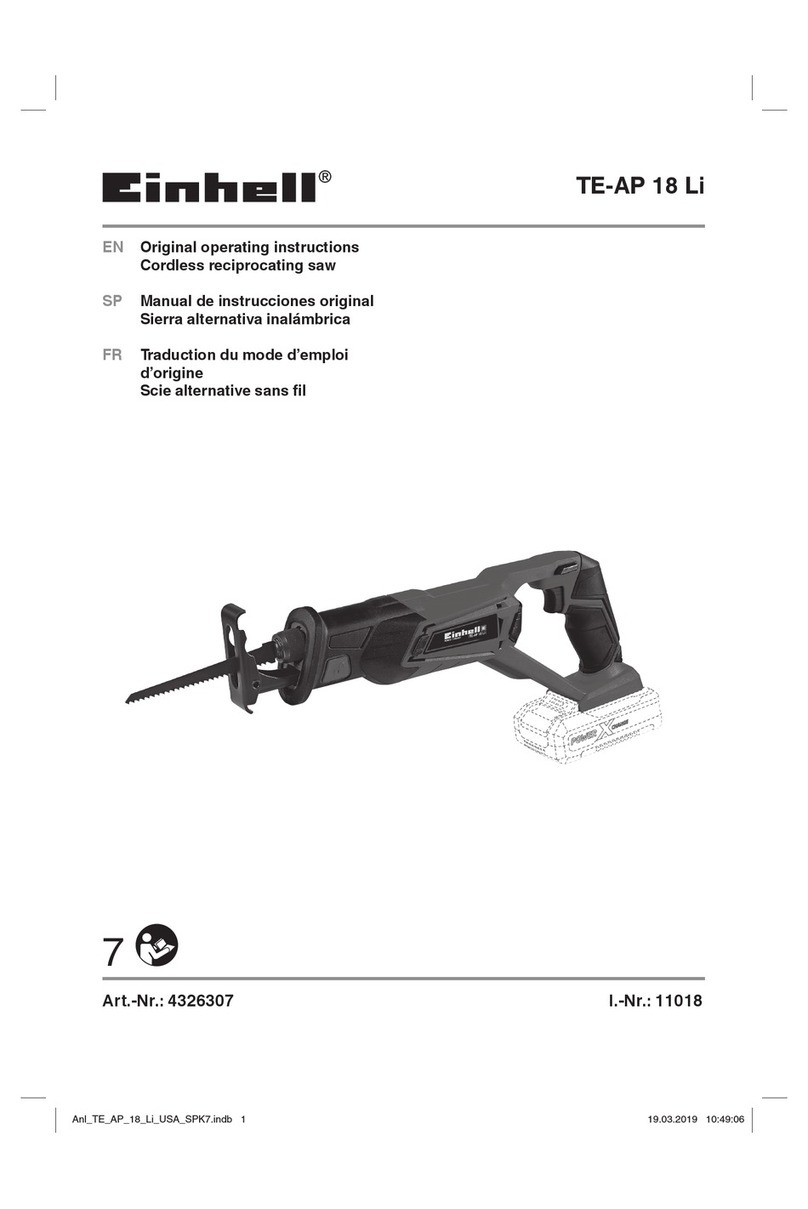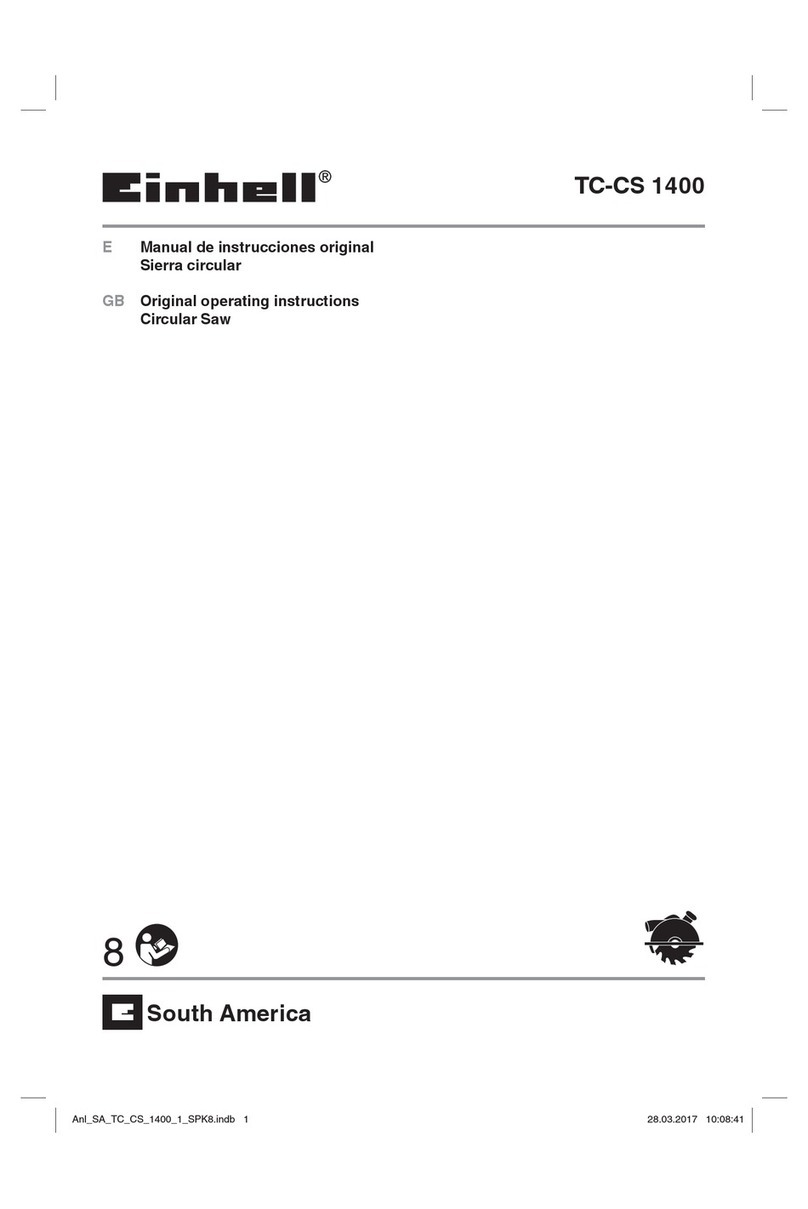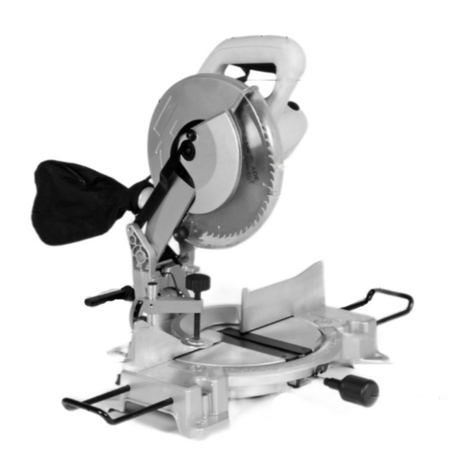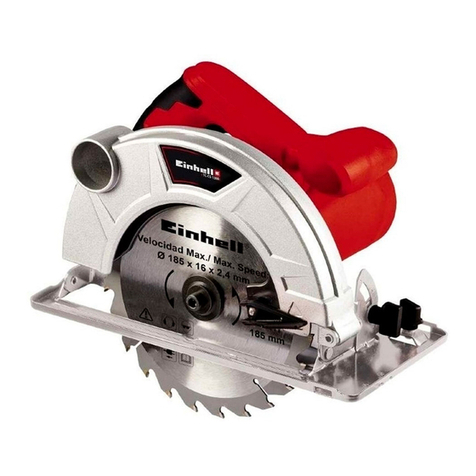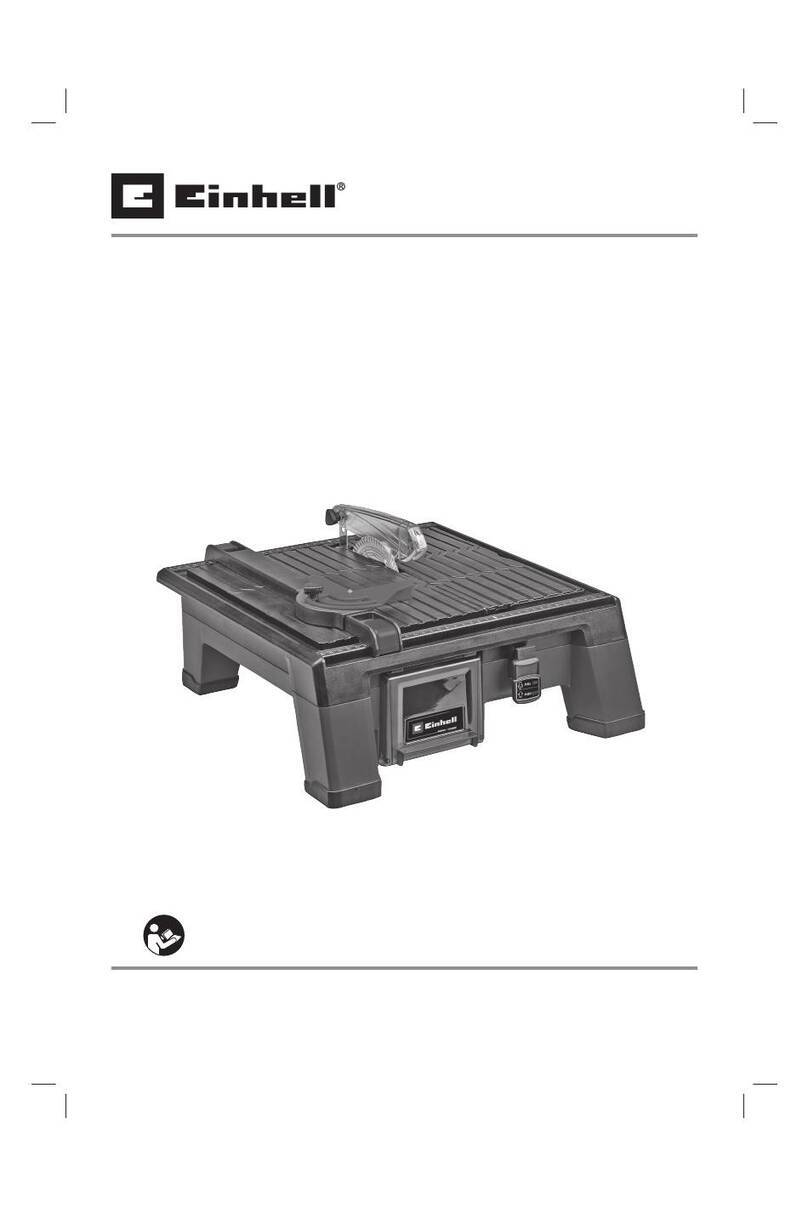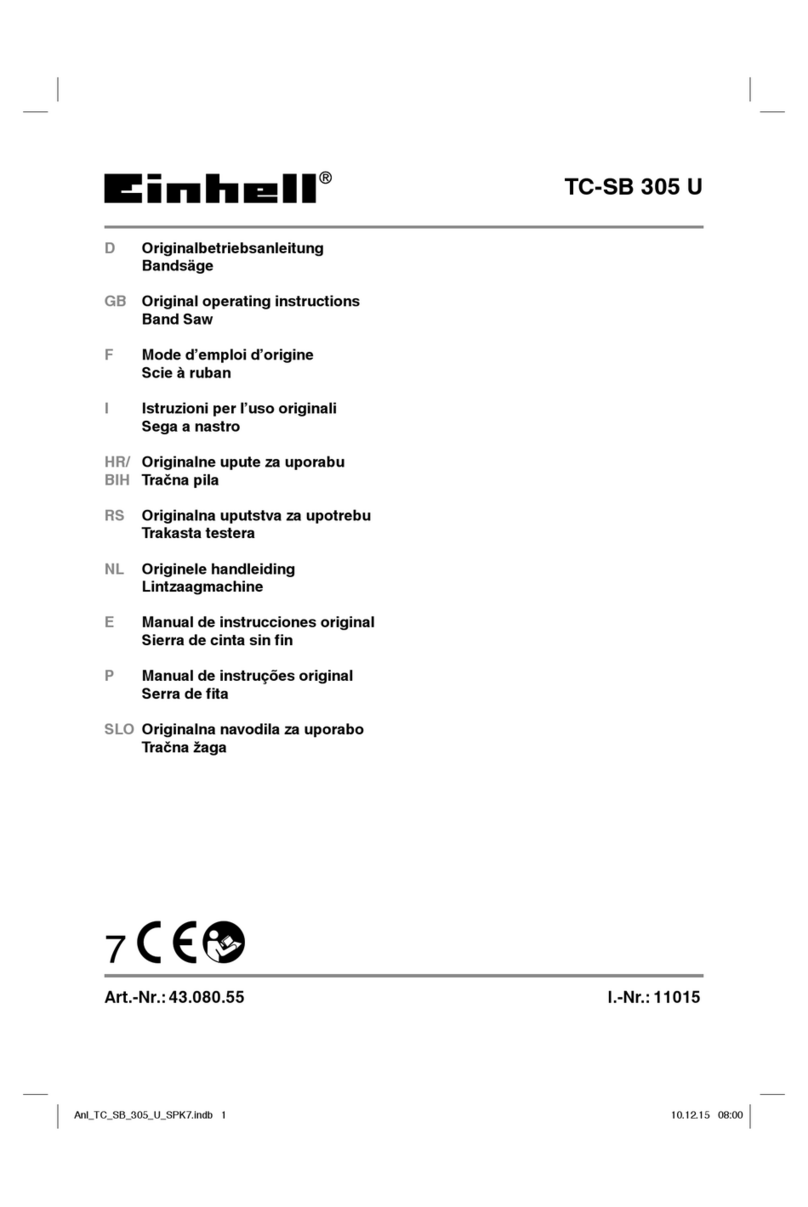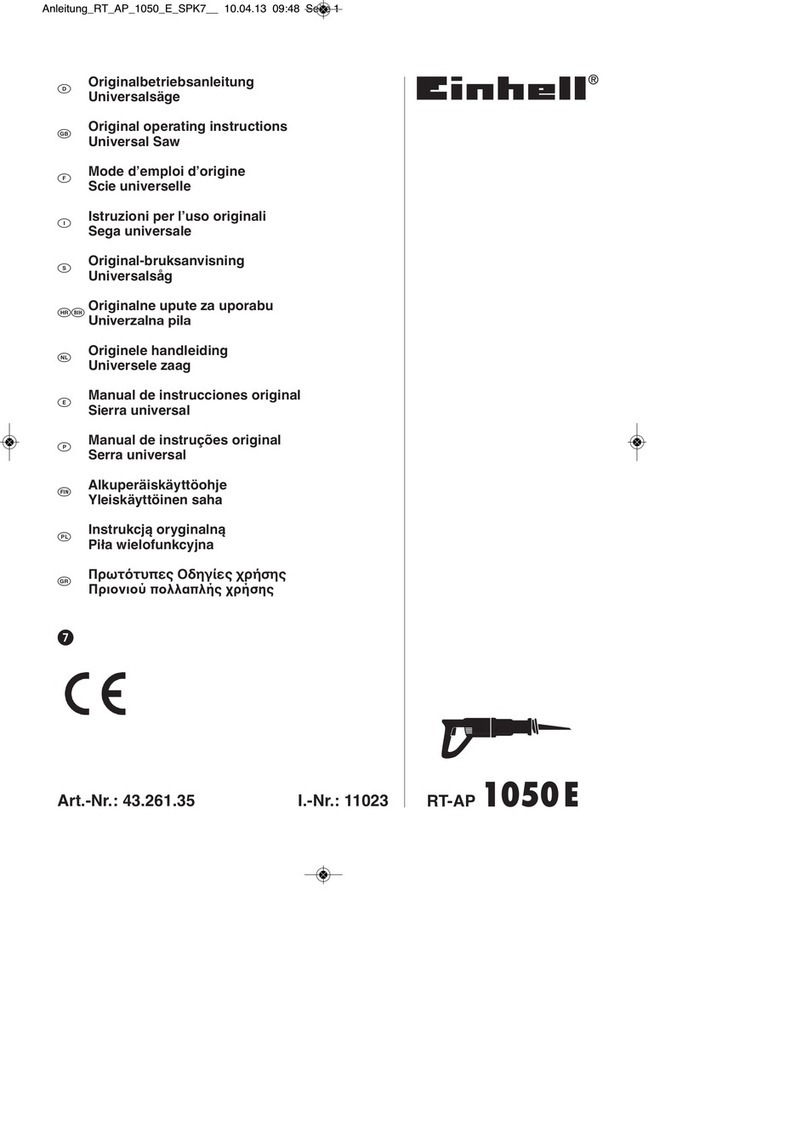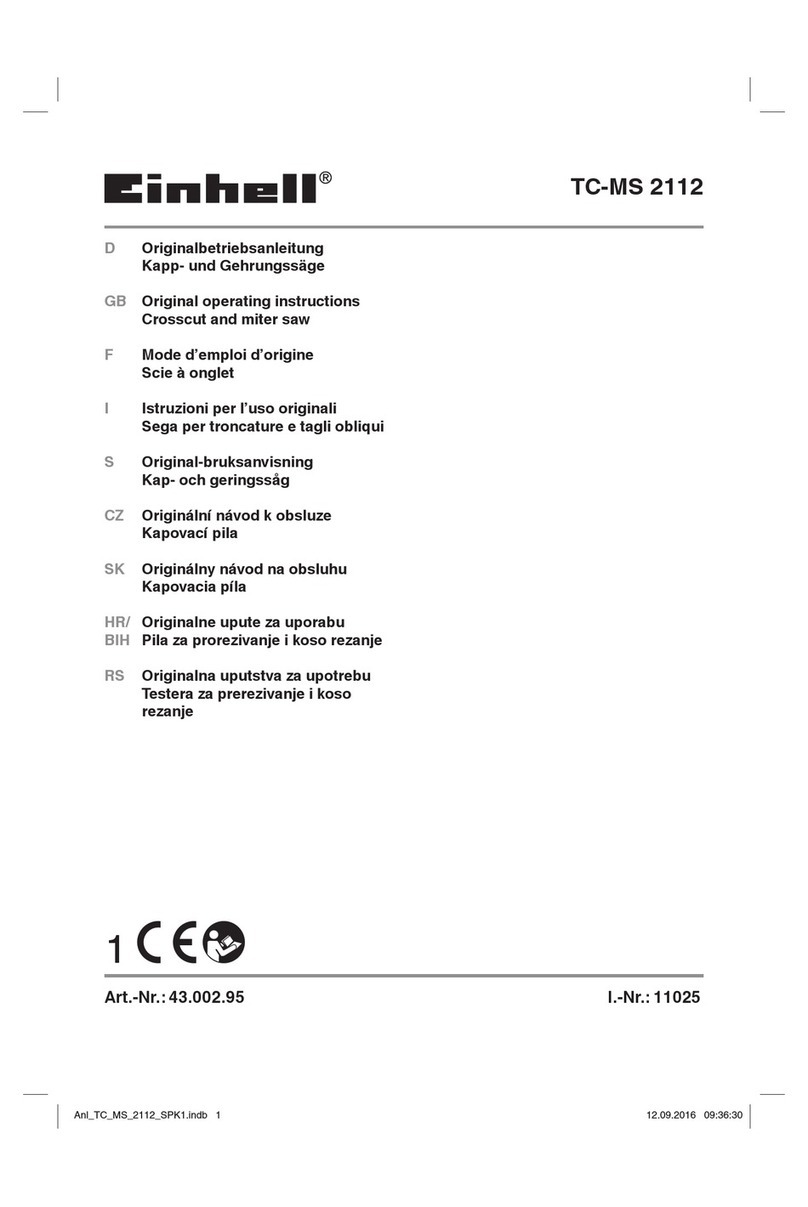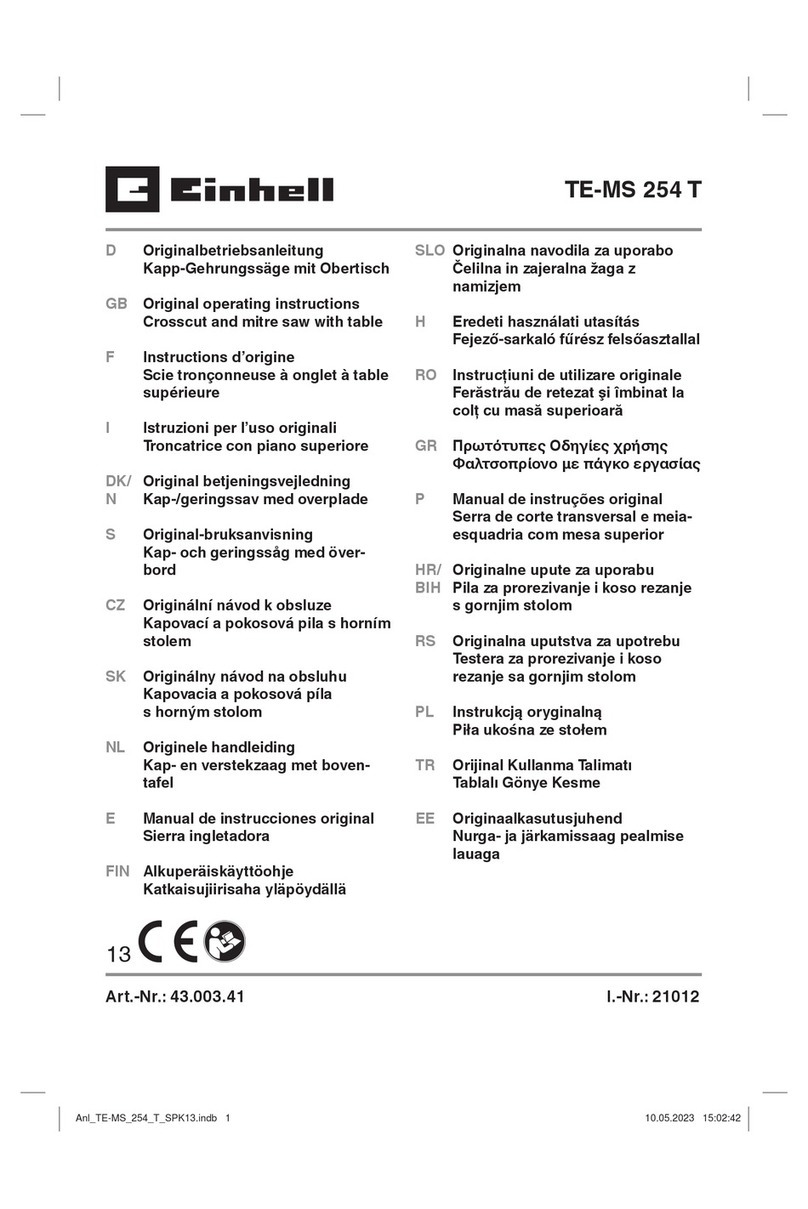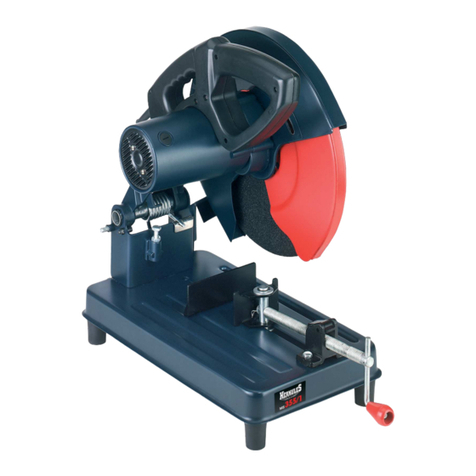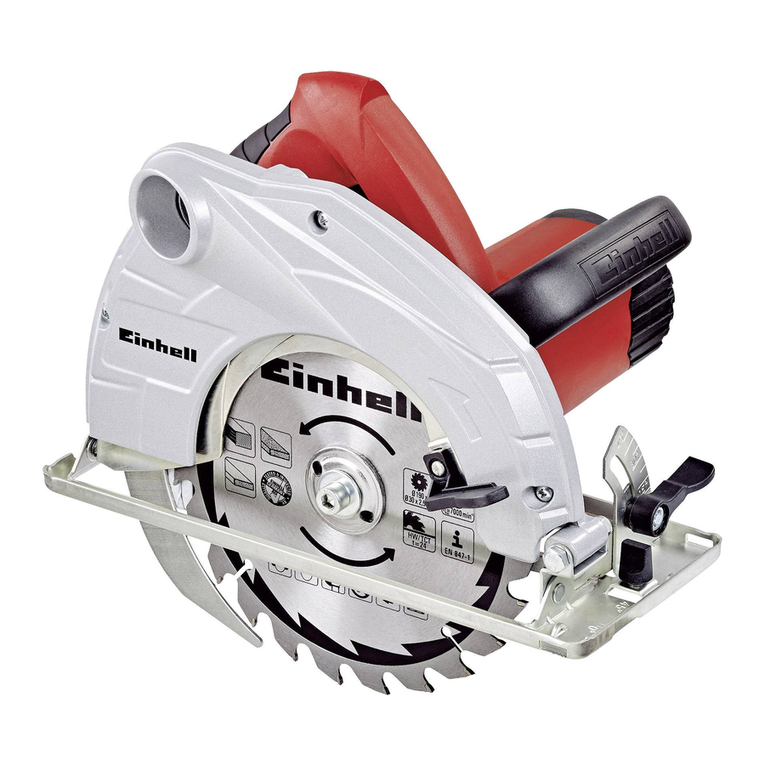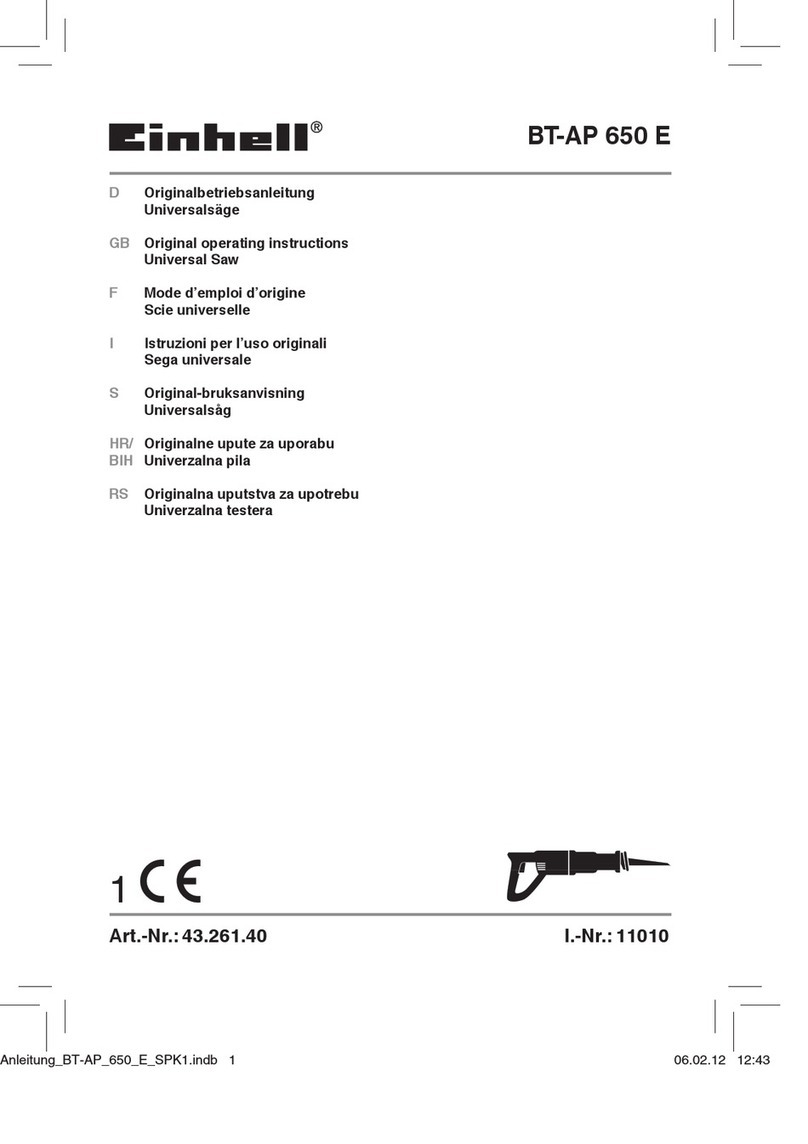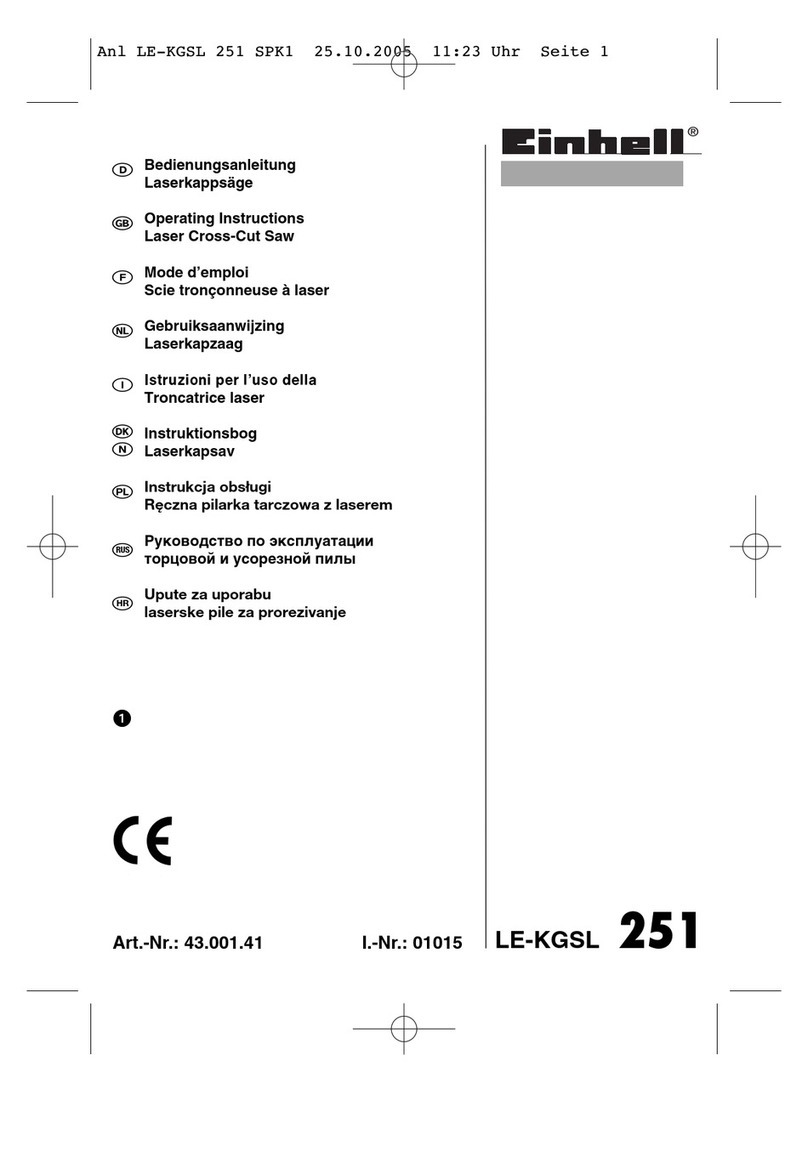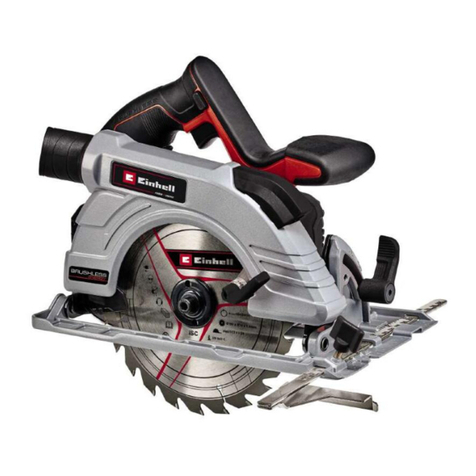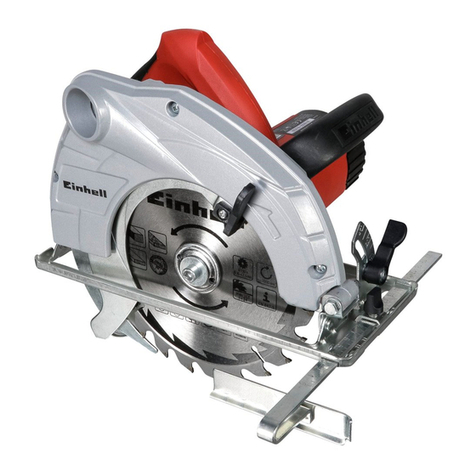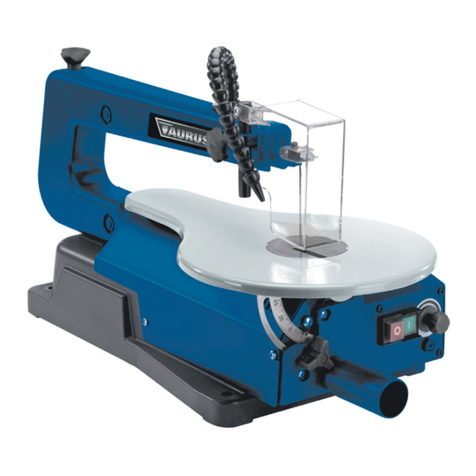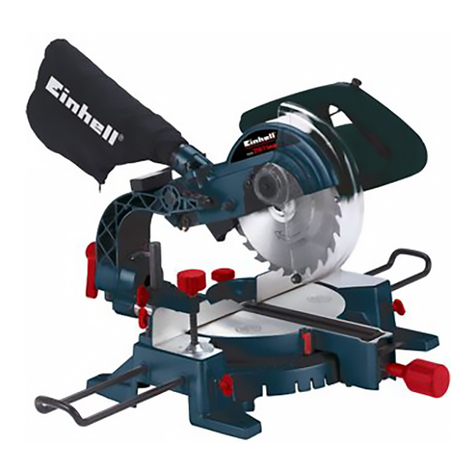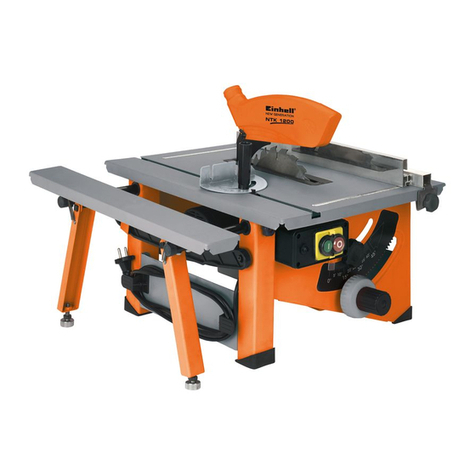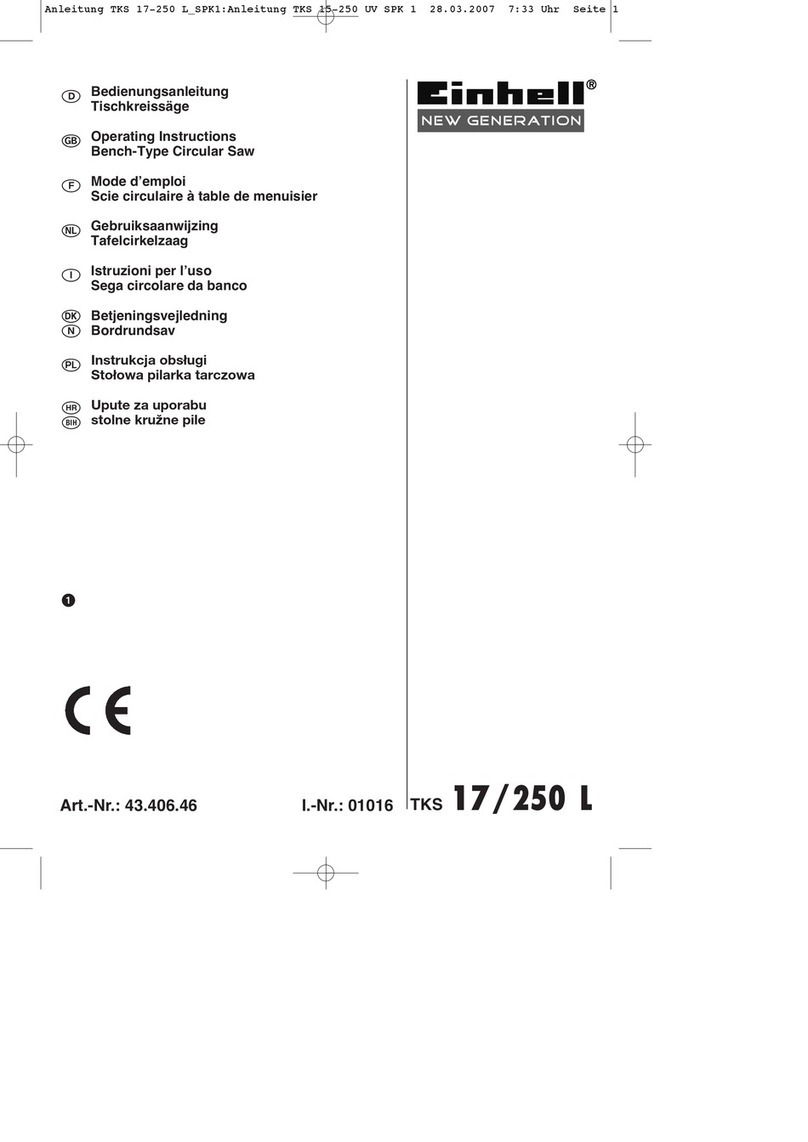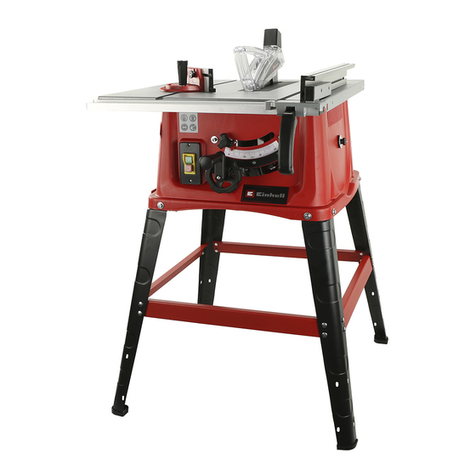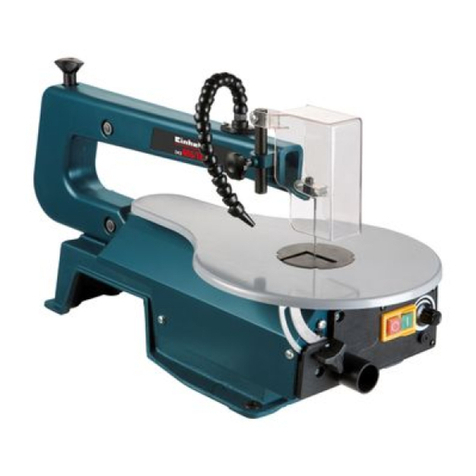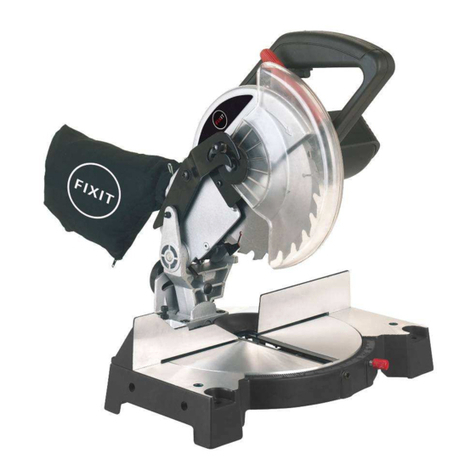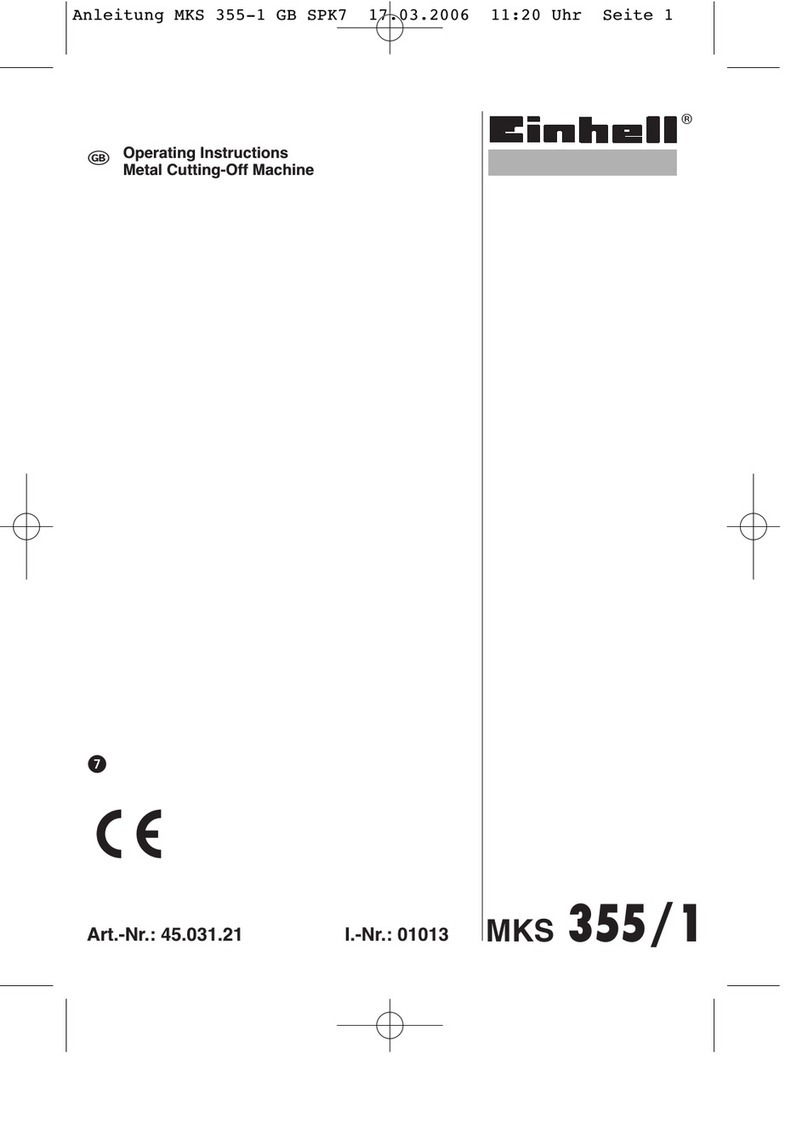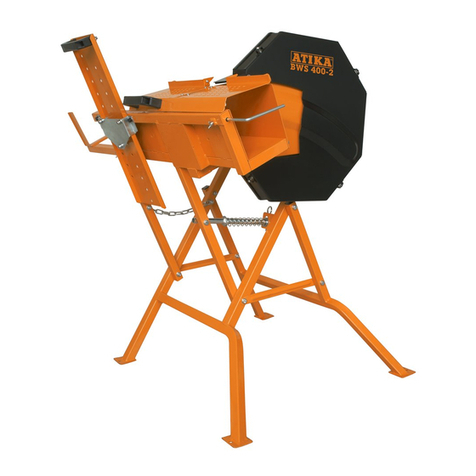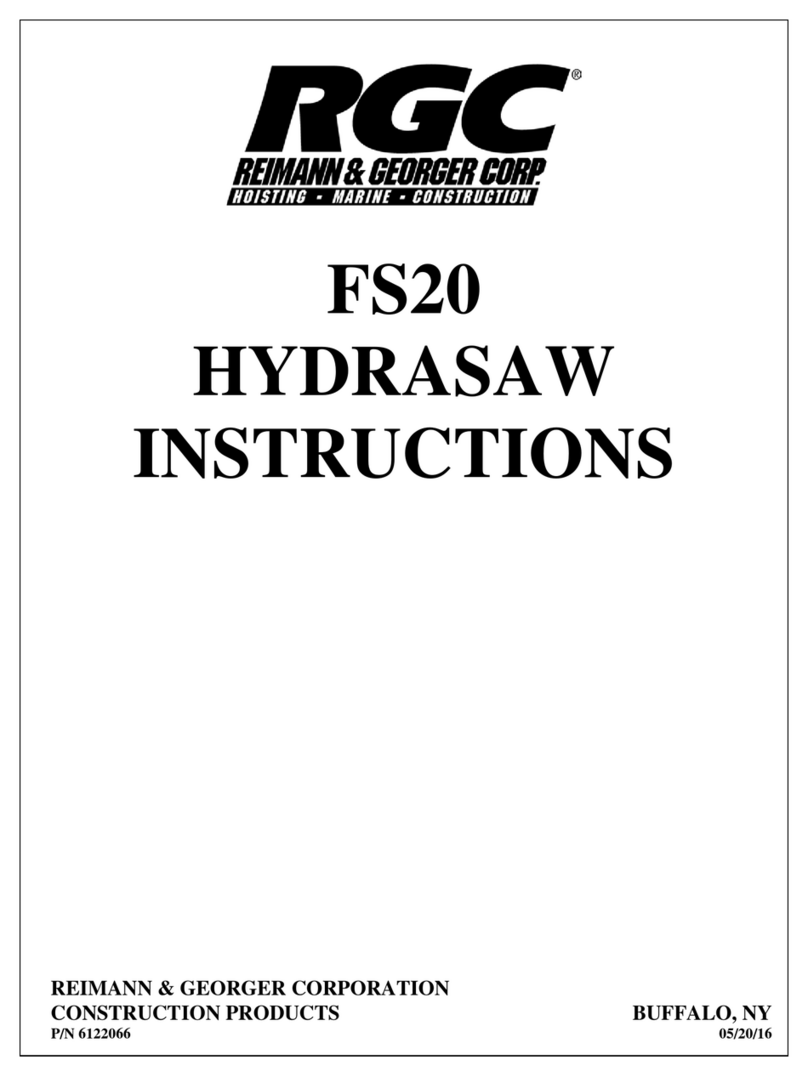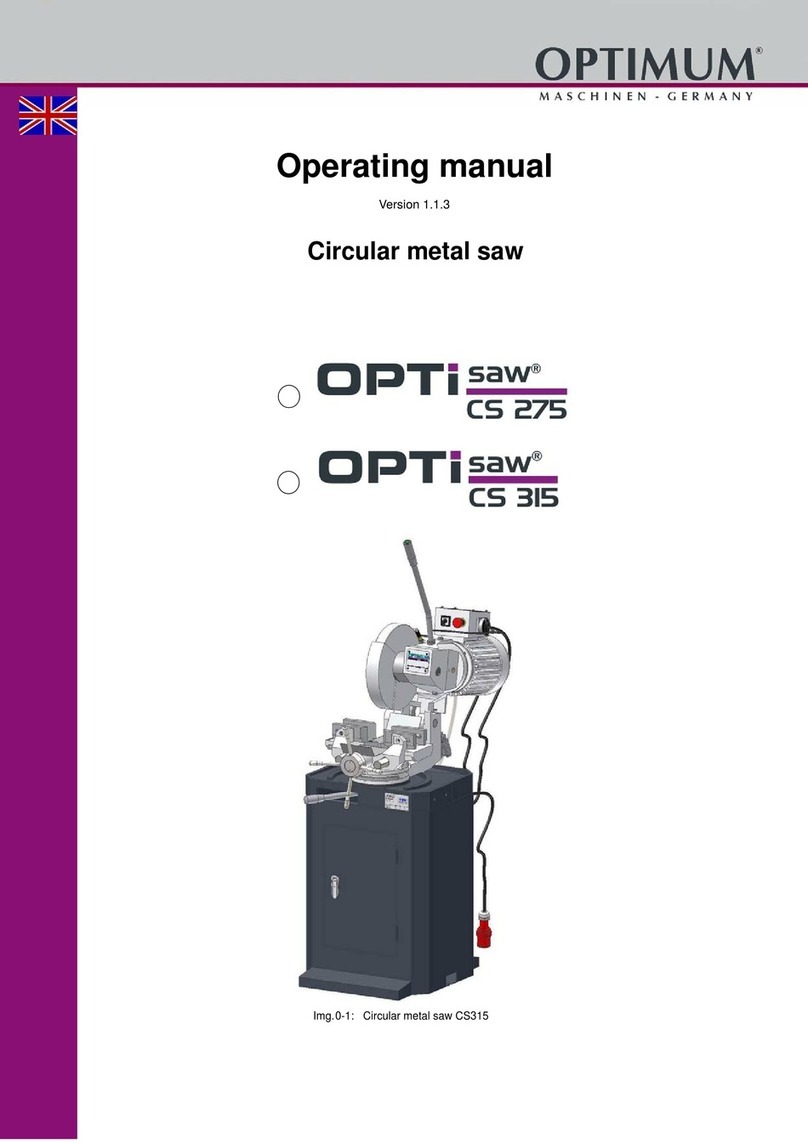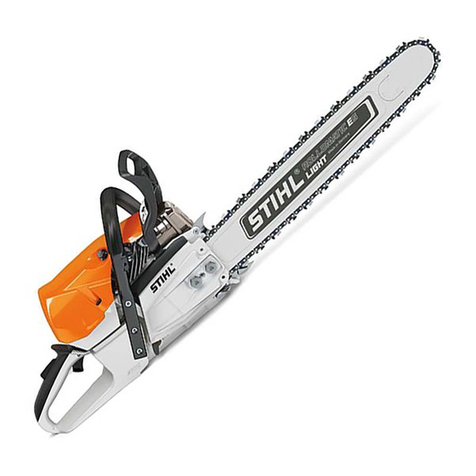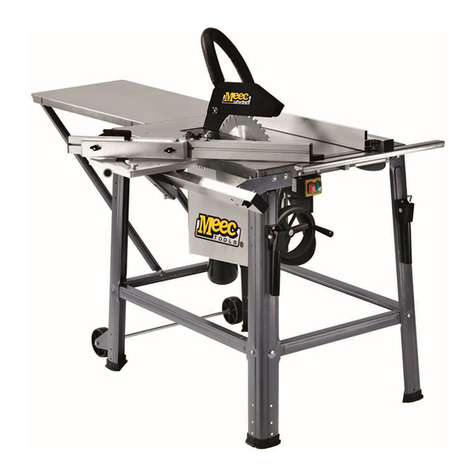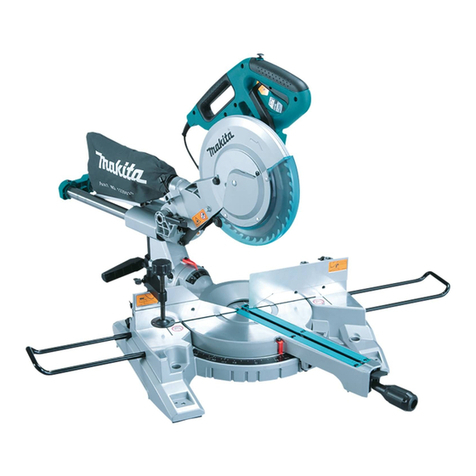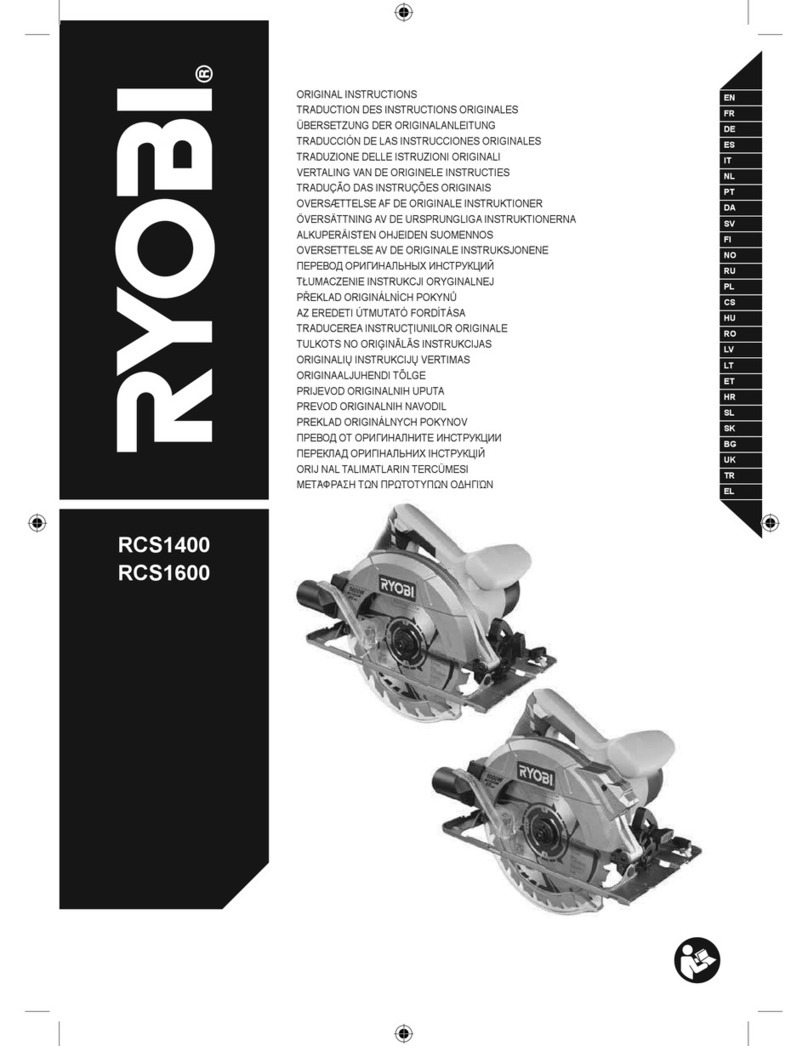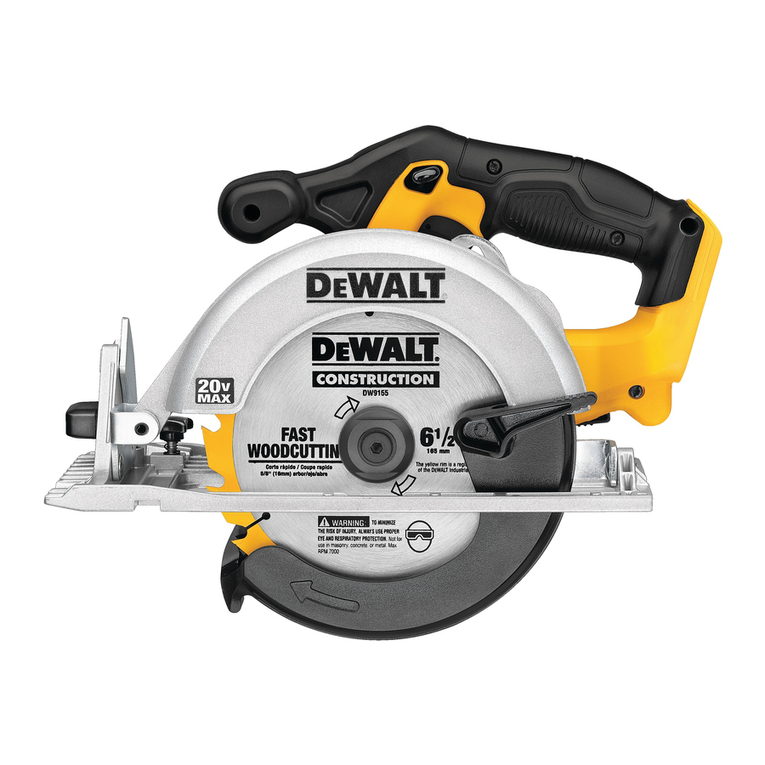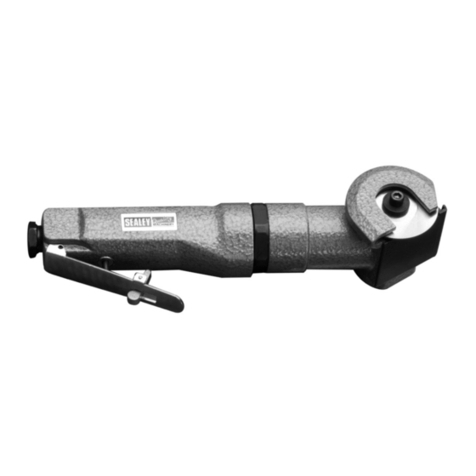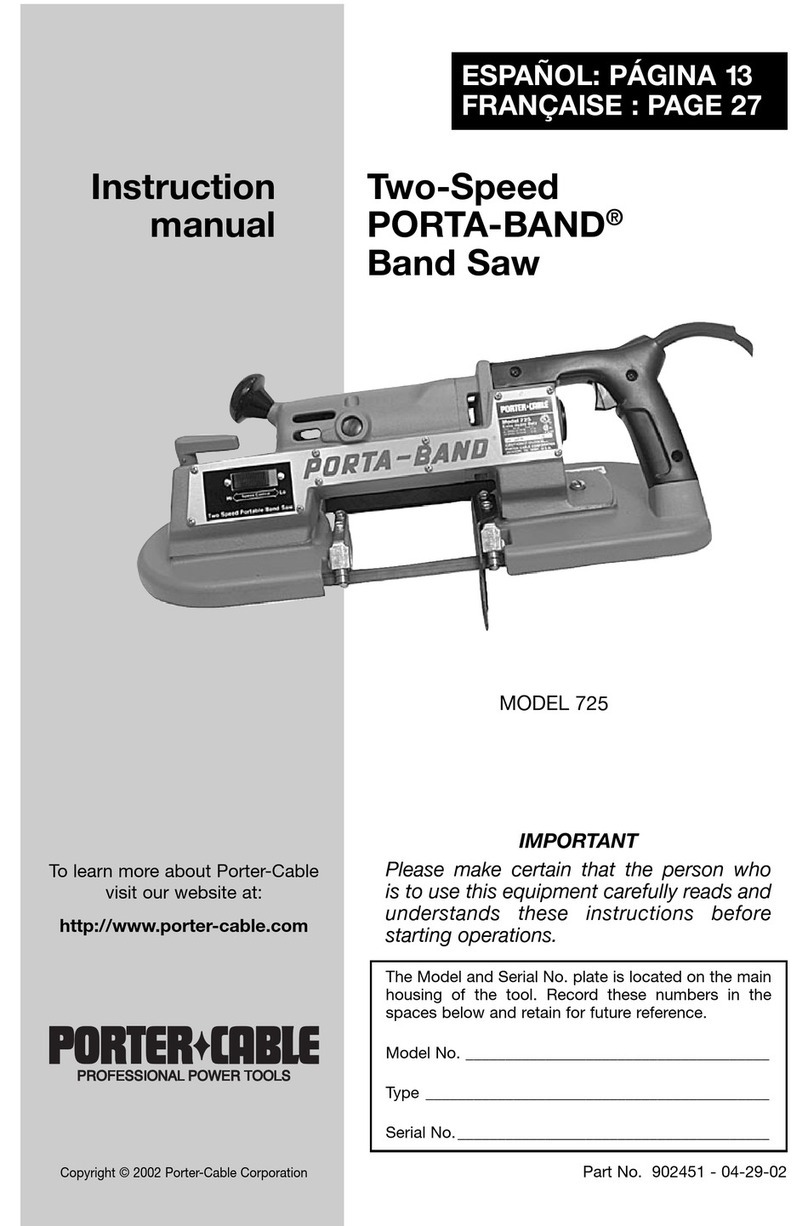
EE
- 9 -
ver menos de un diente entero.
d) No sujetar nunca ni con las manos ni con
las piernas la pieza a cortar. Asegurar la
pieza sobre una base estable. Es impor-
tante sujetar bien la pieza para minimizar el
peligro de entrar en contacto con el cuerpo,
engancharse en la hoja o perder el control.
e) Sujetar el aparato sólo por la empuñadu-
ra aislada cuando se realicen trabajos en
los que la herramienta de corte pueda to-
par con cables o con el propio cable del
aparato. El contacto con cables conductores
de corriente pone las piezas metálicas bajo
tensión y conlleva una descarga eléctrica.
f) Cuando se realicen cortes longitudinales
utilizar siempre un tope o una guía de
cantos recta, así se mejorará la precisión
del corte y disminuirán las posibilidades de
que la hoja de la sierra se atasque.
g) Utilizar siempre hojas de sierra del ta-
maño adecuado y con perforación de
alojamiento adecuada (p. ej., en forma de
estrella o redondo). Las hojas de la sierra
que no pertenecen a las piezas de montaje
de la sierra no giran bien por lo que se pierde
el control de la herramienta.
h) No utilizar nunca arandelas o tornillos de
la hoja de la sierra dañados o incorrec-
tos. Las arandelas y tornillos de la hoja de
la sierra han sido fabricados especialmente
para la sierra, con el n de ofrecer la potencia
y seguridad en el funcionamiento óptimas.
Otras instrucciones de seguridad para todas
las sierras
Causas de los contragolpes y formas de evi-
tarlos:
• Un contragolpe es una reacción repentina
provocada por una hoja de la sierra que se
haya quedado enganchada, atascada o que
esté mal alineada. A consecuencia de dicho
contragolpe, la sierra se eleva de forma
incontrolada soltándose de la pieza y despla-
zándose en dirección al operario.
• Si la hoja de la sierra se engancha o bloquea
en la hendidura guía, se bloquea, por lo que
la fuerza del motor impulsa el aparato en di-
rección contraria hacia el operario.
• Si la hoja de la sierra se torsiona o está mal
alineada en el corte, los dientes del canto
posterior de la hoja se podrían enganchar en
la superficie de la pieza, de forma que la hoja
saldría de la hendidura guía y la sierra se ex-
pulsaría en dirección del operario.
Un contragolpe es la consecuencia de un uso in-
debido de la sierra. Se puede evitar siguiendo las
medidas indicadas a continuación:
a) Sujetar la sierra con las dos manos y
poner los brazos en una posición en la
que se puedan resistir los contragolpes.
Mantenerse siempre a un lado de la hoja
de la sierra, no ponerla apuntando direc-
tamente al cuerpo. En caso de contragolpe,
la sierra circular podría saltar hacia atrás,
aunque la persona que la utiliza puede do-
minar las fuerzas de rebote si se toman las
medidas adecuadas.
b) En caso de que la hoja de la sierra se blo-
quee o se interrumpa el proceso de corte
por otro motivo, soltar el interruptor ON/
OFF y dejar parada la sierra en la pieza
hasta que la hoja se detenga completa-
mente. No intentar nunca retirar la sierra
de la pieza o tirar hacia atrás mientras la
hoja siga en movimiento o se pueda pro-
ducir un efecto de contragolpe. Buscar el
motivo por el que se ha bloqueado la hoja de
la sierra y tomar las medidas adecuadas para
resolverlo.
c) Si se desea volver a poner en funciona-
miento una sierra incrustada en la pieza
de trabajo, centrar la hoja de la sierra en
la hendidura guía y comprobar que los
dientes no estén enganchados a la pieza.
Si la hoja está bloqueada, se podría salir de
la pieza o provocar un contragolpe al poner la
sierra de nuevo en funcionamiento.
d) Apoyar cualquier placa grande para
evitar el riesgo de contragolpe causado
por la hoja bloqueada. Las placas grandes
se pueden doblar bajo su propio peso. Las
placas deben estar apoyadas en los dos
laterales, tanto en las inmediaciones de la
hendidura guía como en el borde.
e) No utilizar hojas de sierra romas o daña-
das. Las hojas de la sierra con dientes romos
o mal alineados provocan, por la estrecha
hendidura de corte, mayor rozamiento, blo-
queo de la hoja de la sierra y contragolpe.
f) Antes de cortar, apretar bien los ajustes
de profundidad de corte y el ángulo de
corte. Si se modica el ajuste durante el
proceso de corte, la hoja podrá bloquearse y
provocar un contragolpe.
g) Tener especial cuidado al realizar un
“corte de inmersión” en una zona oculta,
p. ej., una pared existente, puesto que la
hoja de la sierra se podría bloquear y provo-
Anl_SA_TC_CS_1410_1_SPK8.indb 9Anl_SA_TC_CS_1410_1_SPK8.indb 9 11.03.2021 10:31:2111.03.2021 10:31:21
